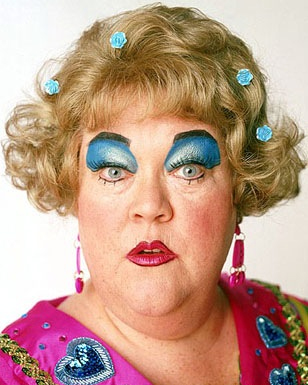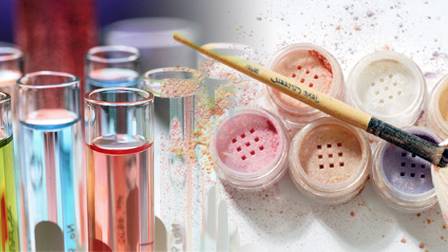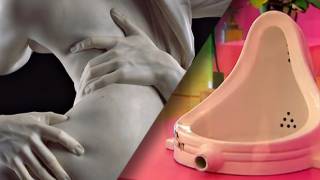Laboratory Beauty vs. Homegrown Beauty

”I was first to break the news about the death of Lady Diana. The CNN team couldn't get into makeup fast enough,” said Matt Drudge.Every morning millions of women wake up and enhance their looks by applying make-up. How many of these women actually know what it is they are rubbing into their skin, lips and around their eyes? For if they knew, would they feel differently about it? Many make-up companies do not list the ingredients on their packaging and if they do, which is rare, have fun identifying what those ingredients are. If you’re curious to know what it is you’re rubbing into your skin and absorbing into your bloodstream, you will find many of those ingredients toxic and extremely harmful to your health, skin and vitality, even in small doses. In the long run, wearing these toxic ingredients will only make your appearance and health worse.
A new study on teenagers and toxic chemicals was released by the Environmental Working Group (EWG), and it has some very disturbing implications. Laboratory tests revealed that adolescent girls across America are contaminated with chemicals commonly used in cosmetics and body care products. The study of 20 teens found an average of 13 different hormone-altering chemicals in their bodies. Think of what these chemicals can do in women who have been wearing make-up for decades.
All over the world spanning across the nations, women and men have been wearing cosmetics for centuries. The first archaeological evidence of make-up was found in Ancient Egypt in the 1st Dynasty (c.3100-2907 BC). Ancient Egyptians, not realizing their dangerous properties, used cosmetics containing mercury and white lead. They had a wide extent of make-up utensils. One of them is kohl, which was used to outline the eyes. It is made up of lead, copper, burned almonds, soot, and other ingredients. It was believed that eye make-up could ward off evil spirits and improve the sight. Even the poor wore eye make-up in ancient Egypt.
Although, tribal peoples and country dwellers have been managing to create make-up using herbs, flowers, minerals, leaves and fruit, women throughout history have sought drastic measures to achieve ”that” look.

During the Italian Renaissance, lead paint was used to lighten the face, which was very damaging to the wearer. Aqua Toffana was a popular face powder, made from arsenic. The same went for women in the Greco-Roman society.
During the Regency era (1811-1820), the most important item was rouge, which was used by most everyone. At that time, eyebrows were blackened and hair was dyed. To prevent a low hairline, a forehead bandage dipped in vinegar in which cats dung had been steeped was worn.
The most dangerous beauty aids during this time were white lead and
mercury. They not only eventually ruined the skin but also caused hair loss, stomach problems, the shakes, and could even cause death. Although these dangers became known through the death of courtesan Kitty Fisher, the majority of women continued to use these deadly whiteners. And today, these deadly ”beautifiers” can be called phthalates, triclosan, parabens, methylparaben, propylparaben and aluminum to name a few. Mercury is still widely used.
During the 1800's, women would also use belladonna to make their eyes appear more luminous, even though they were aware it was poisonous. Many cosmetics were made by local pharmacists, known as apothecaries in England, and common ingredients included mercury and nitric acid. Hair dye was made from coal tar, which is now illegal in America. Today, we use chemicals such as ammonia, resorcinol, persulfates, lead and 4-ABP to dye hair. Same story, different names.
Around the time of the Victorian Era, face makeup began to be associated with prostitutes and actresses. Proper women did not wear it. They did however use natural ingredients such as oatmeal, honey, egg yolks, rosewater, rice powder, beet juice and lemon to enhance their complexions.
In Japan, the white pigment on geisha's faces consisted of 60% of zinc and titanium dioxide, 10% glycerin and 30% pure water. It was mineral based and natural. Although, some white face-paint could also contain lead, mercury, sticky rice or millet.
Persian women used henna dyes to stain their hair and faces with the belief that these dyes enabled them to summon the majesty of the earth.
Cosmetics were seen as a health threat in Elizabethan England. Instead, women wore egg whites over their faces for a glazed look.
Enhancing your appearance, is something we all do and have done for ages but if we are made of the Earth, wouldn’t using truly natural ingredients of the Earth be the best way to do it? Because of media brainwashing, many women associate using earthy products with a less glamorous type of woman or as an inconvenience. Many are also influenced by Hollywood movies and ideals of what women should look like and what they should buy to get the look. Meanwhile, sinister cosmetic companies are making billions selling toxic beauty products, killing us softly.
There is another option. Many mineral make-up companies exist. Minerals are the most natural cosmetic a woman can wear. Mineral make-up consists of loose powders formulated from crushed minerals (Titanium Dioxide, Iron Oxides, Mica and Zinc Oxide) extracted from the Earth with no fillers added. These natural ingredients are even good for your skin. They can be used as cover up, eye make-up, blushes and more. But, beware as many of the brands that claim to be”all natural minerals” sill include the ingredient called bismuth oxychlorid, an inorganic white pigment. If you look on the periodic table of elements, you'll notice plain old bismuth with an atomic number of 83. The symbol is Bi. It neighbors lead, tin, antimony and polonium on the periodic table. Bismuth does occur naturally in the earth, but in very small amounts. Most of the bismuth produced in the USA is as a by-product from refining lead, tin, copper, silver and gold ores. Bismuth without refinement is not safe for use in cosmetics. To make it safe it must be refined and combined with other elements to produce bismuth oxychloride. Certainly not “natural” as most companies claim. Once the bismuth has been collected, it is further refined through several stages to remove dangerous elements like lead. Then it is chlorinated, which gives us bismuth chloride (BiCl3). In this stage it still poses a dangerous risk, smelling of hydrochloric acid. When bismuth chloride is combined with water, it decomposes and part of the chlorine is replaced by oxygen from the water. This process is called hydrolysis and the end result is Bismuth Oxychloride.
Many popular mainstream make-up companies are jumping on the mineral make-up wagon but they’re adding chemical fillers to the minerals. “Minerals” to them is just another key word to reach a broader consumer base.
Lastly, don’t be fooled by common key words such as fresh, beneficial, pure, natural, organic and anti-aging. Know your ingredients. These ingredients will impact your life. There is always an alternative. Replacing a little at a time is better than nothing. Think about that when you are rubbing lotion into your skin, brushing your teeth, washing your hair, soaping your body, using deodorant, shaving, spraying perfume, applying sunscreen, powdering your baby etc. with chemical additives. Between the products we use for our daily body care and food contamination, it is no wonder people are sick and tired.
"The thing that bugs me is that the people think the FDA is protecting them. It isn’t. What the FDA is doing and what the public thinks it’s doing are as different as night and day." — Dr Ley former Commissioner of the FDA.Source: redicecreations.com
ONe of many great places to get Mineral make-up is at: mineralhygienics.com






















